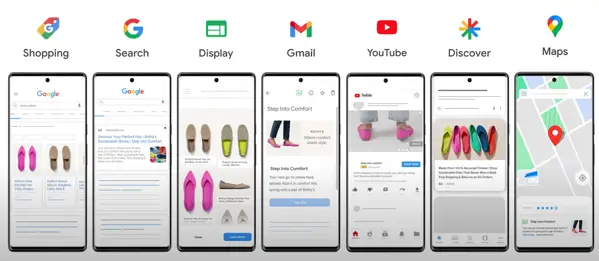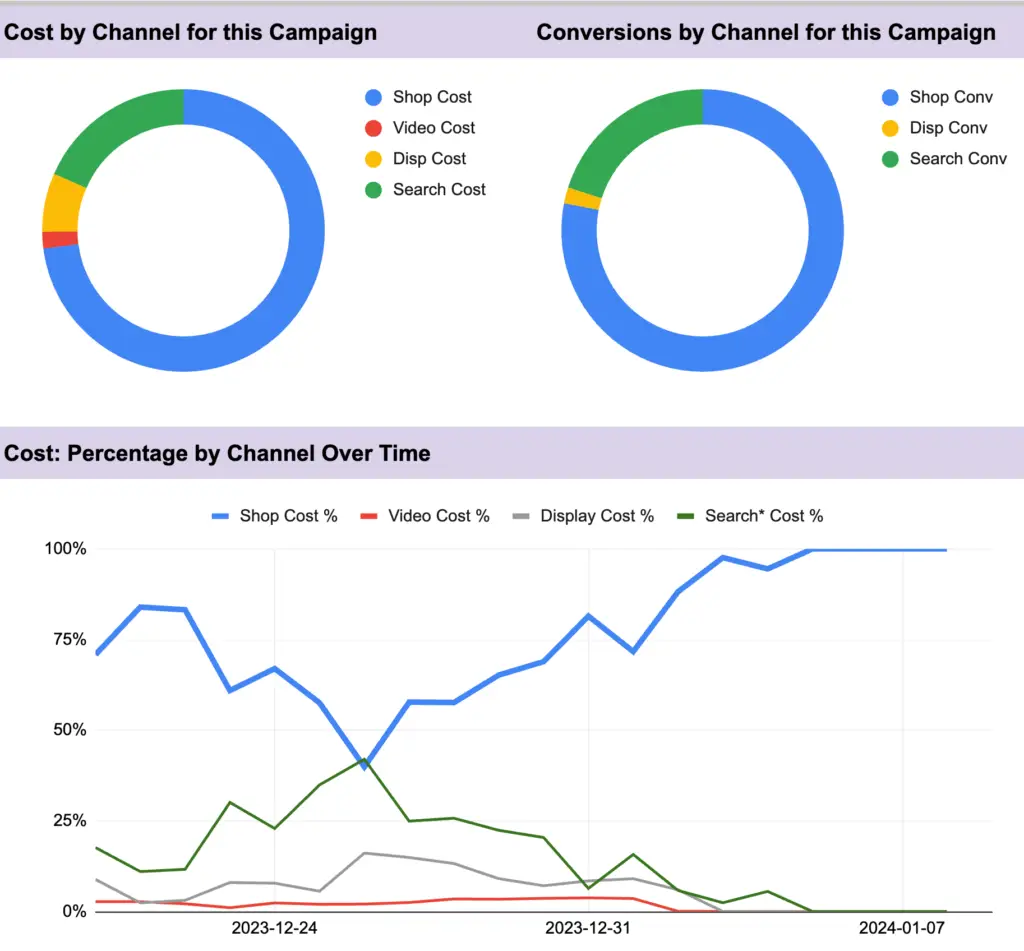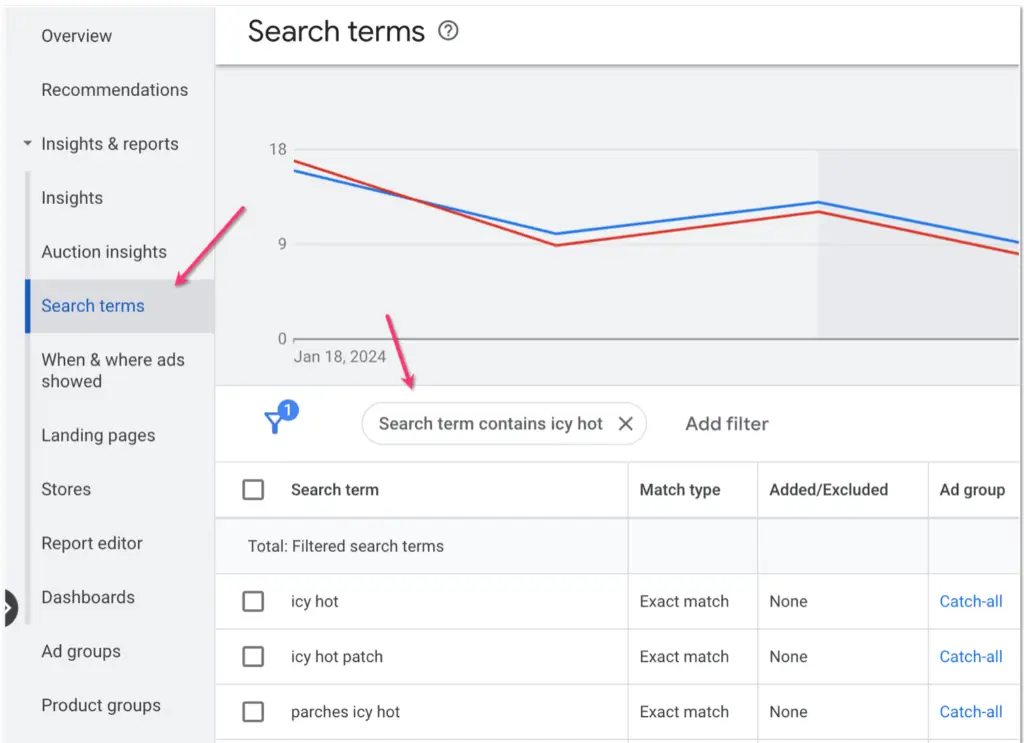Search ads are impactful, yet the secret to e-commerce success lies in harnessing the potential of shopping ads.
Let’s get into optimizing shopping and Performance Max campaigns for peak performance, with insights updated for 2024.
Video Tutorial
If you prefer video content, look at this video guide from my YouTube channel.
Why structure shopping campaigns
While combining all your products into one Google Shopping campaign is technically possible, splitting them into smaller groups often unlocks significant advantages for your operational efficiency and account performance.
From a logistical standpoint, dividing campaigns can be beneficial for:
- Managing products across different countries: Separate campaigns per country enable tailored language, bidding, and performance tracking.
- Optimizing seasonal products: Dedicated campaigns for seasonal items, like winter apparel, allow you to pause them during off-seasons, avoiding wasted ad spend easily.
- Different countries: That’s an obvious choice when you advertise in different countries, especially with different currencies, languages, or both
- Seasonality: If you sell swimwear and winter jackets, you probably want to treat those products differently. Put them in separate campaigns.
- Budget requirements: Set campaign-level budgets to allocate resources precisely by category, country, or other criteria
- Experimentation: Test new strategies within isolated campaigns to assess their impact on performance more effectively
However, the real value of splitting campaigns lies in the ability to optimize for performance.
By creating separate campaigns for different product groups (e.g., best sellers vs. regular products, promotional vs. non-promotional items, discounted vs. full-priced items, low stock vs. overstocked), you can apply customized settings and strategies to each group, maximizing their performance potential.
Basic requirements for running Google shopping campaigns
Before launching your Google shopping campaigns, let’s take a moment to ensure you have the necessary foundation in place. This checklist highlights the key elements you need:
- Google Ads account. You’ll need an active Google Ads account to manage your campaigns and track their performance.
- Conversion tracking. Measuring success is crucial. Google Ads offers its native conversion tracking, which is recommended for optimal integration. Alternatively, you can import conversion data from Google Analytics.
- Merchant Center account. This platform houses your product data, which fuels your shopping campaigns. Set up a dedicated Merchant Center account to manage your product information efficiently.
- Product Feed: Populate your Merchant Center with a comprehensive product feed. At least provide optimized titles for clear identification. To truly shine, though, aim to include detailed product information like sizes, colors, and accurate product categories.
Remember that while meeting the minimum requirements will get you started, the more vibrant and detailed your product feed is, the better your ads can perform.
Think of it as dressing your virtual shop window to attract clicks and conversions!

What to expect from Performance Max (and how to avoid early mistakes)
Performance Max combines the strength of shopping, search, YouTube, display, and discovery ads, potentially reaching a wider audience than traditional shopping campaigns.

Uncontrollable spend across channels
While Performance Max prioritizes shopping ads, it can also spend on other ad types like Search, Video, and Display. This means you might incur “non-shopping” costs.

While these costs are not visible in the Google Ads interface, you can view them with the help of thisexcellent and free Google Ads script.
Performance fluctuations
Be prepared for an initial dip in performance at the start or after significant campaign changes.
This “learning leriod” allows Performance Max to gather and analyze conversion data.
Optimizing the learning curve
To minimize the learning leriod, resist the urge to make frequent adjustments during the initial stages.

Limited reporting
When changes are necessary, opt for smaller, less frequent updates. Aim for weekly budget adjustments within a 20% range, and apply the same principle to bidding strategies.
While Performance Max offers a streamlined campaign experience, it’s important to acknowledge that its reporting capabilities are currently limited.
This might not be a major concern for smaller accounts, but larger accounts with intricate control needs might find the available data insufficient.

Standard shopping campaigns offer more comprehensive reporting capabilities and may be a better option to satisfy your specific needs.
By understanding these key aspects of Performance Max, you can set realistic expectations and implement strategies to unlock its full potential.
Shopping-Only Performance Max: A Temporary Option with Limitations
While the idea of harnessing Performance Max’s power for only shopping ads is tempting, it’s essential to understand its limitations and temporary nature.
Essentially, the shopping-only Performance Max attempts to nudge the campaign toward prioritizing shopping ads. You can set this up in Google Ads interface or in Google Editor.
However, two main caveats exist:
- Uncertain Shopping Focus: While aiming for only shopping ads, there’s no guarantee. Google might still automatically add text and video assets, potentially leading to non-shopping traffic representing up to 50% of your total cost.
- Official Discouragement: Despite acknowledging this method, Google doesn’t officially recommend it. This raises concerns about potential future changes, possibly even removing the ability to create shopping-only PMax campaigns altogether.

Therefore, consider shopping-only PMax a temporary testing ground. Experiment with it, but ultimately, be prepared to switch to standard shopping campaigns if it doesn’t deliver the desired results.
Shopping Campaign Structures
Choosing the right campaign structure for your Google shopping ads can feel overwhelming. Let’s explore four common approaches, focusing on their setup, features, and potential benefits:
Standard Shopping Starter

This setup:
- Is ideal for new accounts or those with under 30 monthly shopping conversions
- Allocates the entire budget to the shopping ads in a single campaign
- Focuses on generating initial traffic and conversions via manual bidding.
This setup will prioritize cost control and detailed data analysis, which involve a slightly more complex setup compared to Performance Max.
Considerations: While less user-friendly than Performance Max, it offers more control for optimization. Lower performance is possible due to limited data.
Benefits: this approach minimizes early budget fluctuations associated with Performance Max and paves the way for a natural progression to Performance Max later on when the account has accumulated sufficient data.
Performance Max Turbo

Instead of the standard shopping campaign, this setup uses a single Performance Max campaign and “Maximize conversions or conv. value” bidding.
Maximize Conversions bidding aims to spend your entire budget as efficiently as possible to drive conversions, but there’s a slight chance it could exceed your monthly budget due to fluctuations in auction pricing.
This setup is recommended for accounts with at least 30 monthly conversions per shopping campaign.
Performance Max excels with established data on what converts. That’s why, for new accounts, I recommend building that foundation of 30 conversions with standard shopping before venturing into Performance Max.
Considerations
Think of Performance Max as the express lane for Google Shopping campaigns. It’s faster to set up and manage, but the autopilot might not always lead to the optimal destination.
Consider your comfort level with automation and the time you can dedicate to monitoring for the best results.
Performance Max Split: Unlocking Efficiency for Growing Businesses

As your Google Shopping campaigns generate momentum, reaching at least 60 conversions per month, you can unlock additional optimization opportunities through a Performance Max aplit campaign structure.
This approach focuses on maximizing efficiency by dividing your products into separate Pmax campaigns based on performance or category.
Here’s how it works in a two-campaign example:
Bestsellers: Allocate 60% of your budget and utilize the “Maximize Conversions Value” bidding strategy. This lets your top performers shine without budget constraints.
Regulars: Invest 40% of your budget and adopt a “Target ROAS” bidding strategy to achieve specific performance goals. This ensures cost-efficiency for products requiring more control.
Important: Instead of relying on Google Ads reports for identifying bestsellers, delve deeper into your store’s internal data or Google Analytics reports. Initial clicks in Google Ads might not always translate to final sales, so prioritizing true top performers is key.
Considerations
While a Performance Max Split structure involves slightly more complexity compared to a single Performance Max campaign, the setup and management remain quite streamlined.
The real challenge lies in strategically dividing products, allocating budgets, and selecting appropriate bidding strategies.
Benefits
The effort, however, pays off. A well-implemented Performance Max Split campaign typically delivers greater effectiveness than a single Performance Max campaign by providing granular control and optimization potential for different product segments.
Standard Shopping Split Powerhouse: Granular Control for High-Budget Ads

For Google Ads accounts exceeding $20,000 per month, maximizing granular control and optimization becomes a lot more important.
This is where the Standard Shopping Split campaign structure may still excel.
Here’s how it works in an example with an account generating over 200 conversions and featuring frequent promotions:

- Promotional Products campaign: Allocate 40% of the budget and set a higher Target ROAS for these high-performing items. This targeted approach maximizes their potential
- Standard Products campaign: Dedicate 50% of the budget to the remaining products with a slightly lower Target ROAS for balanced performance and cost-efficiency
- Catch-All campaign: Run a third campaign on all products with manual bidding and very low bids to capture any missed traffic at minimal cost
The power lies in the flexibility and control options unavailable in Performance Max. You can leverage:
- Campaign priorities: Fine-tune traffic distribution by prioritizing specific campaigns based on their importance
- Negative keywords: Exclude irrelevant searches to attract more qualified leads and improve conversion rates
Considerations
While this structure requires more upfront effort and active management, the potential payoff is significant.
You gain the ability to precisely tailor strategies for different product segments, optimize performance, and ultimately achieve outstanding results.
Note that a hybrid version of this strategy, with use of standard and Performance Max campaigns, is also possible.
Navigating the Trade-Offs: A Look at Campaign Structure Options
When choosing a Google shopping campaign structure, balancing ease of management with control and potential performance is key.
Here’s a quick comparison of the options we discussed:

Performance Max Structures (Single & Split)
- Ease of Use: Designed for simpler setup and management, ideal for accounts with 30 or more shopping conversions
- Control: Limited control over bids, keywords, and negatives compared to standard campaigns.
- Performance: Can deliver good results but may not offer the same fine-tuning potential as standard campaigns.
Standard Shopping Structures (Starter & Split)
- Ease of Use: Require more upfront effort and ongoing management, making them best for experienced users or high-volume accounts. One caveat is that the Standard Starter is still the best option for a new account or those with low monthly conversions.
- Control: Granular control over bids, keywords, negatives, and campaign priorities for precise optimization.
- Performance: Potential for exceptional results, particularly with the Standard Split structure optimized for different product segments.
Choosing the right fit
For most stores, Performance Max (Single or Split) might be the optimal balance of ease and performance, especially with lower budgets and conversion volumes.
However, larger accounts with the resources for active management may find the Standard Split structure’s control and potential for outstanding results worth the extra effort.
The key takeaway here is that experimentation is crucial!
Regardless of your initial choice, keep testing and refining your campaign structure to unlock the best performance for your specific needs and budget.
Frequently Asked Questions
Here are the responses to the most commonly asked questions about shopping account structures I’ve received.
Can you have feed-only and full Asset groups in a Performance Max campaign?
Yes. Here is one scenario where it might make sense.
If you are undecided whether to use the feed-only or full-asset approach, create two asset groups for the same products in a single Performance Max campaign.
Make one asset group feed-only and another one with full assets. Monitor performance for a while, and then pause the underperformed asset group.
Bestsellers vs. Regulars: do you pick the best Products or Categories?
It depends on your bestsellers! If they belong to a single category, categorizing makes sense.
If not, focusing on individual product IDs offers precise control.
Can I combine Performance Max and Standard Shopping?
Sure, but remember: Performance Max prioritizes your products, potentially overshadowing those in standard campaigns.
Avoid overlap to ensure both structures get fair exposure.
Can I Target the Same Products in Multiple Campaigns?
It is technically possible, but Performance Max usually dominates traffic.
However, a “catch-all” standard shopping campaign can be valuable to capture searches missed by Performance Max, especially for initially unprofitable products.
Conclusion
This post has explored my approach to splitting campaigns, offering several real-world structures to fuel your e-commerce success.
Do you have any questions about the strategies discussed?
Hit the comments below – I’m here to help!


